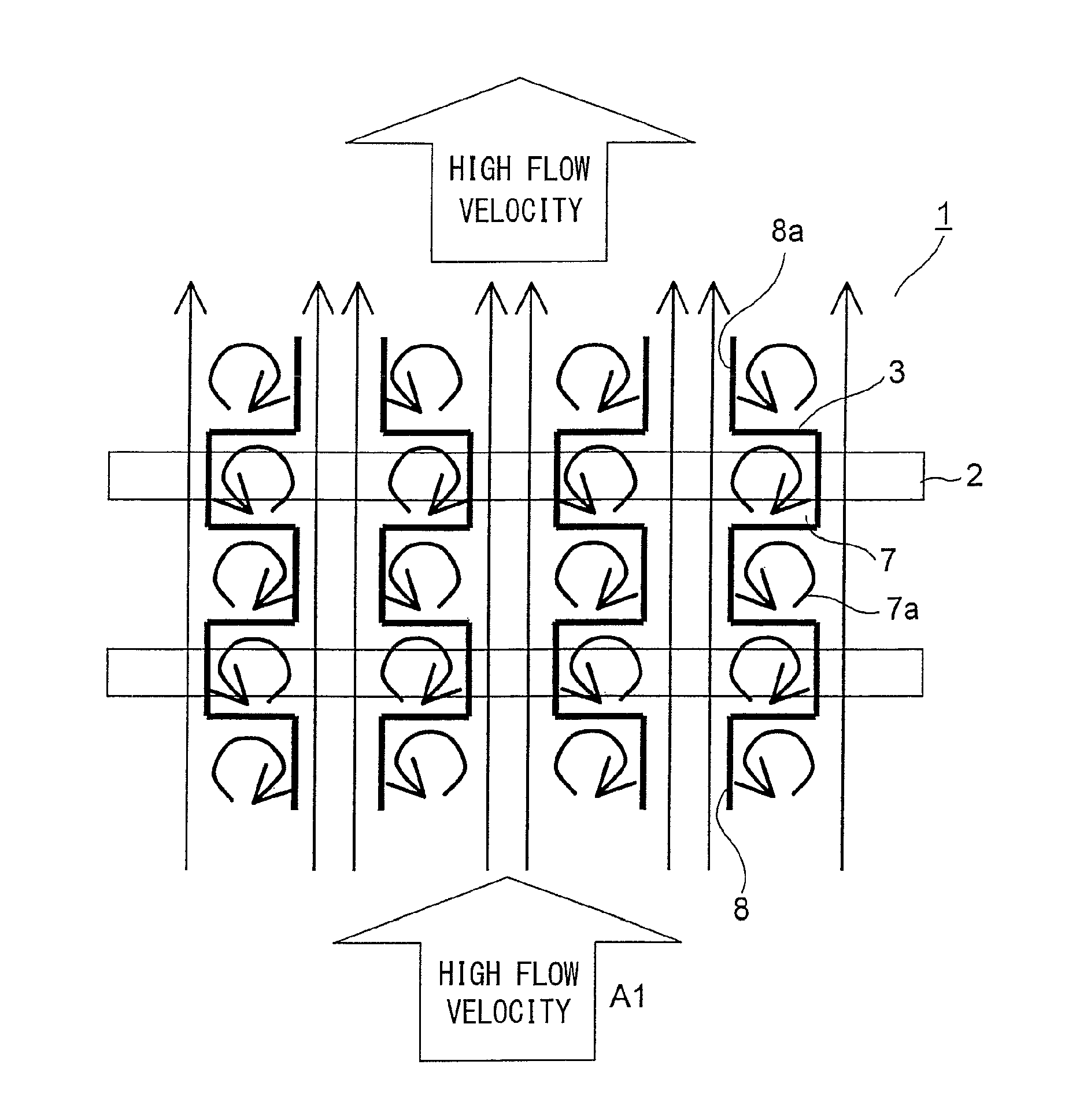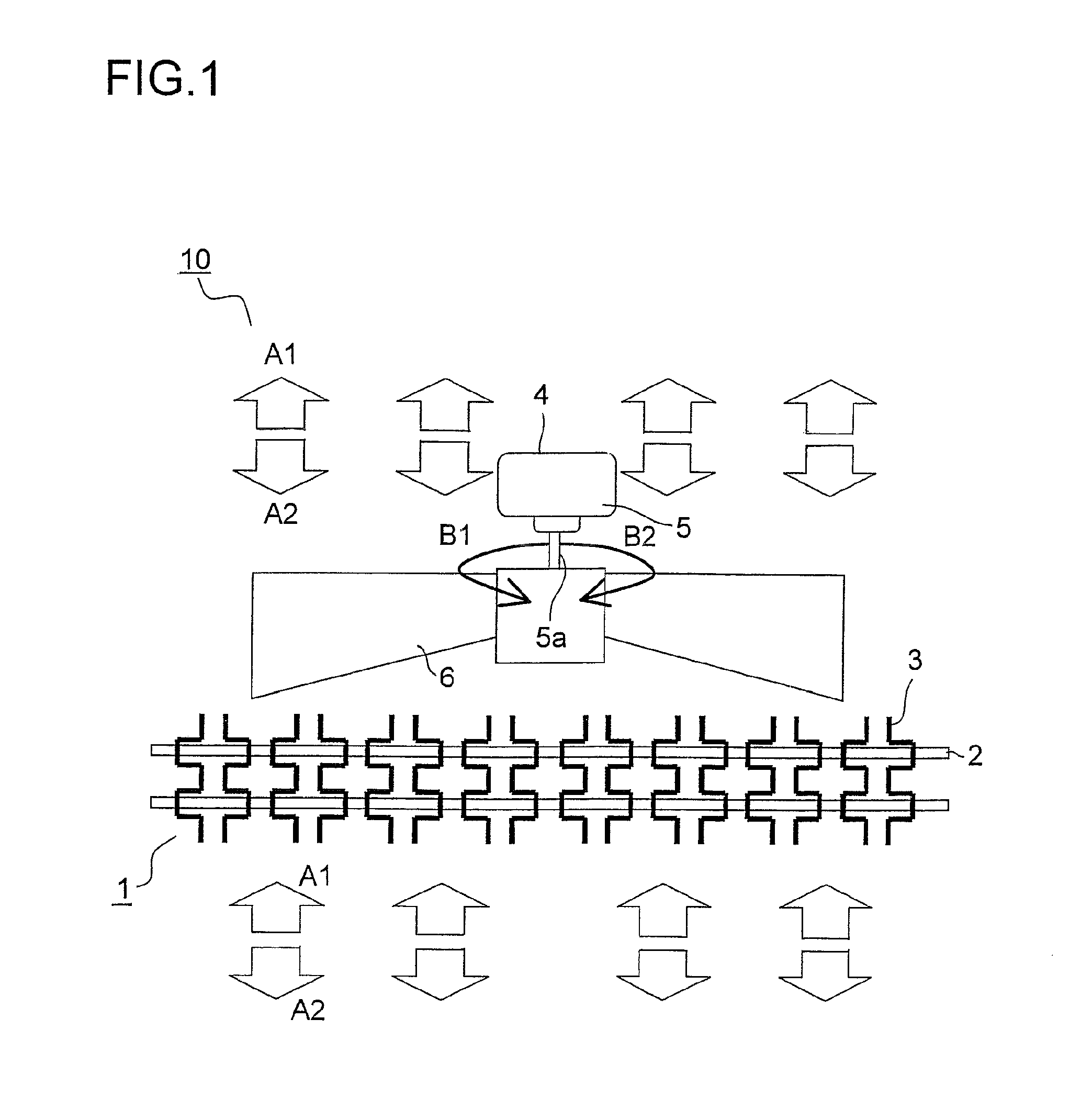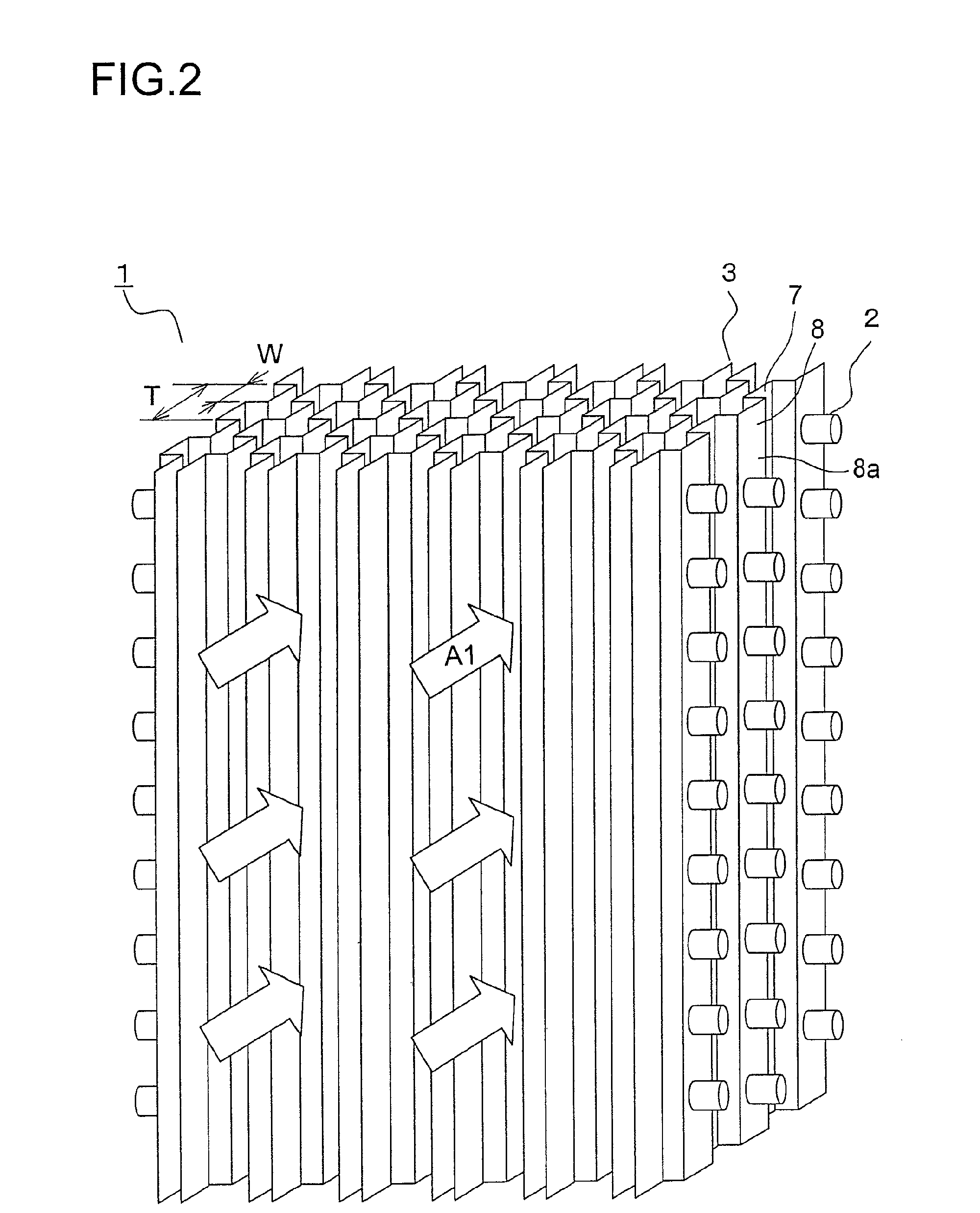Heat exchanger and heat exchanging system
a heat exchanger and heat exchange technology, which is applied in the direction of indirect heat exchangers, refrigeration components, light and heating apparatus, etc., can solve the problems of reducing heat exchange coefficient, achieve steady and efficient heat transfer, enhance heat exchange efficiency, and improve heat exchange efficiency
- Summary
- Abstract
- Description
- Claims
- Application Information
AI Technical Summary
Benefits of technology
Problems solved by technology
Method used
Image
Examples
first embodiment
[0054]The following describes an embodiment of the present invention with reference to the appended drawings. FIG. 1 is a schematic structural view showing a heat exchanging system according to a first embodiment. A heat exchanging system 10 includes a heat exchanger 1 and a fan 4. The heat exchanger 1 has a tube 2 for a first fluid such as water, CO2, or a HCF-based refrigerant to flow therethrough and a fin 3 attached to the tube 2, and thus is of a finned tube-type.
[0055]The heat exchanging system 10 is placed in a second fluid such as air. A fan 4 is formed of an axial flow fan such as a propeller fan and has a vane 6 attached to a motor shaft 5a of a motor 5. In accordance with electric power used to drive the motor 5, the rpm (rotation speed) of the vane 6 changes sinusoidally, i.e. at a regular cycle, the rpm of the vane 6 is increased and decreased and the rotation direction thereof is inverted.
[0056]In this configuration, when the vane 6 rotates in a direction indicated by ...
second embodiment
[0078]The description is next directed to a heat exchanging system 10 according to a second embodiment. This embodiment has a configuration similar to the previously described configuration of the first embodiment shown in FIG. 1 and is different therefrom in arrangement of fins 3. FIGS. 8 to 12 are top views explaining states where a second fluid passes through a heat exchanger 1. In the heat exchanger 1, a concave part 7 and a convex part 8 of the fin 3 are arranged so that the concave part 7 of each of the fins 3 faces the convex part 8 of an adjacent one of the fins 3. Parts other than these are configured similarly to those of the first embodiment.
[0079]FIG. 8 shows a state of the second fluid passing between the fins 3 at a maximum flow velocity. A Reynolds number Re obtained at this time with respect to a width W of the concave part 7 (see FIG. 2) as a representative length has a value larger than a critical Reynolds number.
[0080]A main flow direction of the second fluid flow...
third embodiment
[0091]FIG. 13 is a schematic structural view showing a heat exchanging system according to a third embodiment. For the sake of convenience of explanation, like reference symbols denote parts corresponding to those of the previously described first embodiment shown in FIG. 1. In a heat exchanging system 11 according to this embodiment, a vane 6 of a fan 4 is configured differently from the first embodiment. Parts other than this are configured similarly to those of the first embodiment.
[0092]The fan 4 is formed of an axial flow fan, and the vane 6 is composed of vane blades 6a and 6b having mutually opposite angles of attack, which are arranged alternately in a rotation direction. The fan 4 is driven at a constant rpm, and in the figure, with respect to a left side portion of a heat exchanger 1 opposed to the vane blade 6a, a second fluid is introduced thereto in a direction indicated by an arrow A3. In the figure, with respect to a right side portion of the heat exchanger 1 opposed ...
PUM
 Login to View More
Login to View More Abstract
Description
Claims
Application Information
 Login to View More
Login to View More - R&D
- Intellectual Property
- Life Sciences
- Materials
- Tech Scout
- Unparalleled Data Quality
- Higher Quality Content
- 60% Fewer Hallucinations
Browse by: Latest US Patents, China's latest patents, Technical Efficacy Thesaurus, Application Domain, Technology Topic, Popular Technical Reports.
© 2025 PatSnap. All rights reserved.Legal|Privacy policy|Modern Slavery Act Transparency Statement|Sitemap|About US| Contact US: help@patsnap.com



